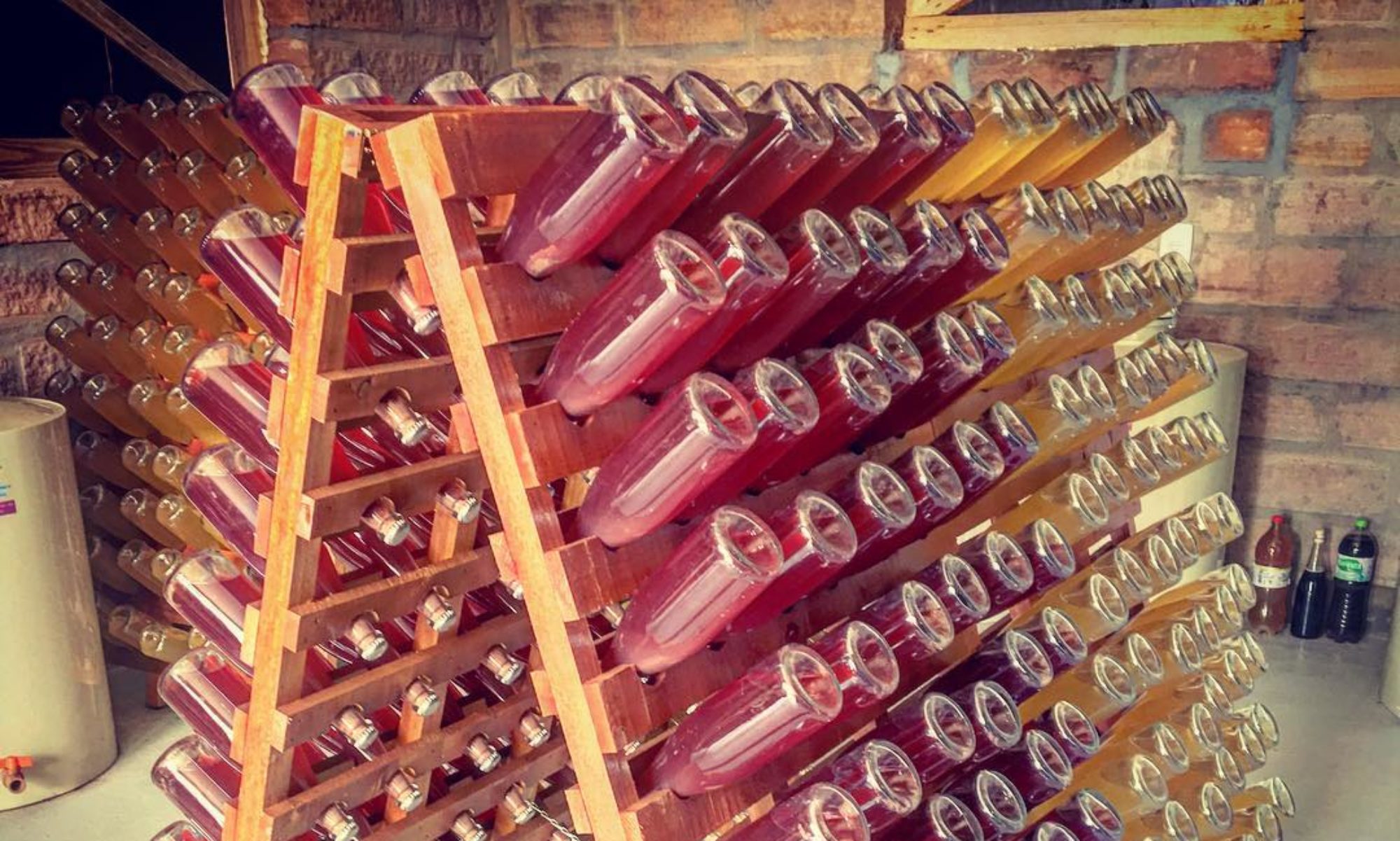Pét-nat – pronounced „pet-naa“ – is short for Pétillant Naturel, which in English simply means „naturally bubbling“. It is a return to the old, original tradition of sparkling wine production. Pét-nats stand for authentic craftsmanship in mostly small quantities and for a natural handling of wine.
Regardless of whether white, red or rosé, the wines are often cloudy thanks to unfiltered bottling and thus differ visually from the often impeccable mass-produced products from the large Prosecco and Champagne houses. Most pét-nat producers work their vineyards according to organic or even biodynamic methods.
It is thanks to the use of natural yeast and bottle fermentation that pét-nat wines display a wide range of exciting aromas. Pétillants are not exclusive, uniform sparkling wines, but accessible wine experiences (usually in the $20-30 range) that offer unfamiliar taste experiences and high drinking fun.
Pét-nat brings the sparkling wine back to where it has always belonged: Right in the middle of the dining table. Uncomplicated, authentic and exciting.
How is pét-nat different from champagne?
Unlike champagne, pét-nats do not undergo a second fermentation, in which sugar and yeast are added to the champagne wines. In pét-nat production, the natural fermentation is interrupted, the wine is bottled and finishes fermentation in the bottle. In France, this is also called the «méthode ancestrale» of sparkling wine production (you will find this term on the label sometimes).
The pét-nats also have less pressure and therefore appear lighter, with an often less pronounced perlage. Their pressure in the bottle is usually 2.5-3 bar, while champagne comes in at 5-6 bar. The alcohol content is also often lower than in other sparkling wines.
The packaging also often differs in one important detail: Champagne is closed with the characteristic, large corks. Pét-nats, on the other hand, are usually crowned with a modest crown cork – similar to a bottle of beer or cider.
Pétillants are, to some extent, the „quick & dirty“ version of sparkling wine. While classic champagne requires several years of ageing, pét-nats are released younger and often tastes wilder and more open than champagne. Thanks to the bottle fermentation, pét-nats are usually completely fermented and dry (broody), but often a charming touch of sweetness remains in the wine.
«The flaws in some natural wines glare more because they are not typical in the modern age, when technology and artifice can eliminate issues like excessive volatile acidity or barnyard aromas that come from unwanted yeast strains. But to me, the tedious insipidity of many processed wines is just as much a flaw. Yet these pétillants, an almost completely random category where anything goes, showed very few flaws. They were not only easy, approachable and refreshing, the best had resonance, depth and length. And they were diverse.»
-Eric Asimov, New York Times wine critic
What is pét-nat? The definition at a glance
- Traditional sparkling wine method
- Simple bottle fermentation with natural yeasts, without adding sugar
- Fine carbonic acid, often cloudy appearance
- Natural production in small quantities
- Unusual, funky aromas
- Inexpensive
- Moderate alcohol content of 9-12%.
Where can I buy pét-nat?
You can find them in natural wine bars, online shops or local wine boutiques (just ask for “pét-nat” – salespeople and sommeliers will know what you mean and guide you to a good bottle). Also, many restaurants have it on their by-the-glass list. (To start out, check our list with recommended producers.)
How do I know it’s pét-nat?
Most bottles specify pétillant naturel or méthode ancestrale on the label. Many also play with the term, labelling it „pitt-nat“, „pet-NOT“ etc. A crown-style cap, artsy label and cloudy wine inside the bottle is also often a good indicator.
What will pét-nat cost?
You don’t need to rob a bank to enjoy pét-nat – this isn’t a high roller like Champagne. Pét-nat’s lower price (mostly around $20-30) makes it affordable and adds to the fun.
When should I drink pét-nat?
Not all pét-nat bottles specify an exact year of the vintage (those are NV, or nonvintage). But even when there are some examples that have improved with cellaring over 3-4 years, this isn’t a wine meant to go dusty in your basement. Drink it sooner rather than later.
Read more: What is the difference between Pet Nat and Champagne?
Also check out our list of great Pet Nat wines and producers.
And make sure to follow us on Instagram for more Pét-Nat inspiration from around the world. #petnattothepeople

